These homemade Swig Sugar Cookies are a fun twist on traditional sugar cookies. These cookies have a soft, chewy, thick texture and a thick layer of frosting.
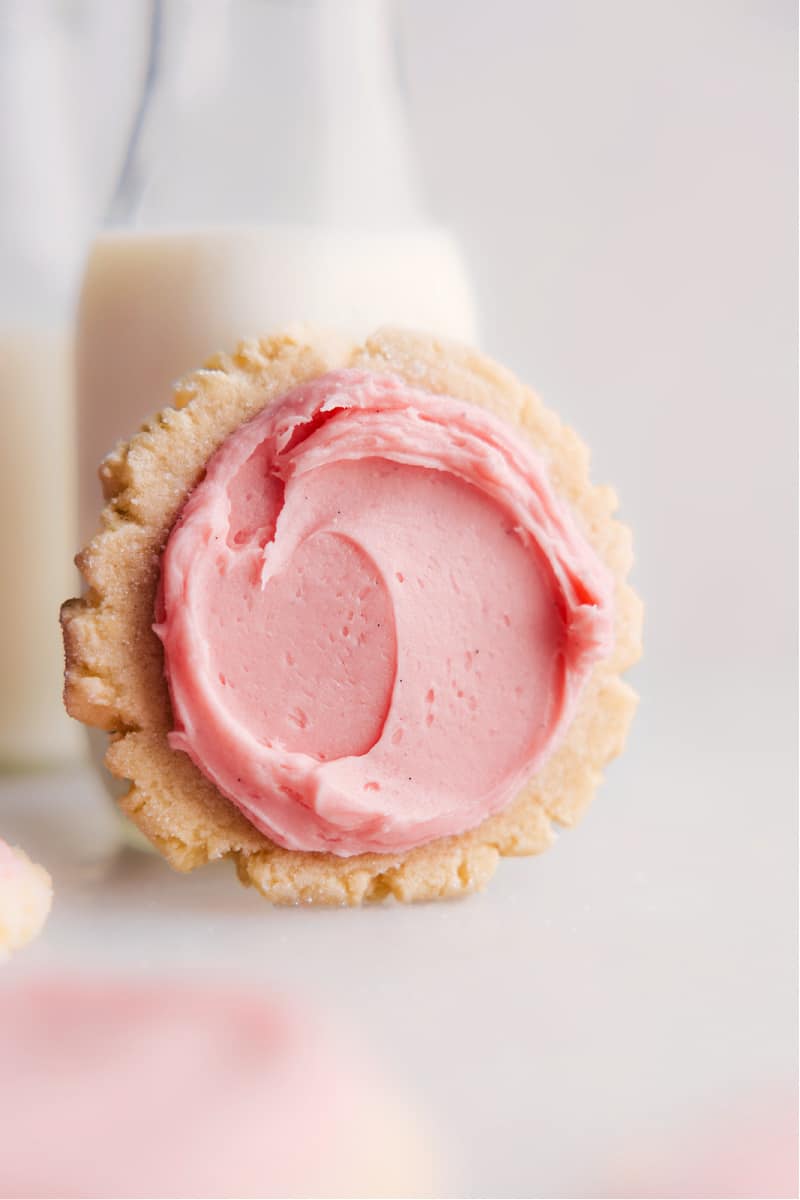
What Are Swig Sugar Cookies?
Swig® is a Utah-based drink and snack restaurant, and their sugar cookies are legendary! These treats are so popular that Swig locations are now popping up outside of Utah. What sets Swig sugar cookies apart from other sugar cookies is their unique texture, with a slight tang that helps them rise and puff up while baking. This yields a thick and chewy cookie.
Swig sugar cookies also typically have a signature “Swig” mark on top, which is made by pressing the bottom of a glass into the cookie dough before baking. This creates a slightly flattened top with a raised edge, perfect for holding a thick layer of frosting!
How To Make Swig Sugar Cookies
Here are some tips to help you make the best Swig Sugar Cookies:
- Use room temperature ingredients: Room temperature ingredients make a difference, especially the butter. This helps it cream better with the sugar and results in a smoother texture.
- Don’t over-mix the dough: When mixing the dry ingredients with the wet, be careful not to over-mix. Too much mixing means you’ll end up with a tough cookie.
- Use high-quality ingredients: When it comes to the butter and vanilla extract, quality matters. They can make a big difference in the flavor and texture of the cookies.
- Let the cookies cool before frosting: It’s important to let the cookies cool completely before adding the frosting. If the cookies are warm at all, the frosting will melt and become too runny.
Swig Sugar Cookies Tips, Continued
- Don’t over-bake: Swig Sugar Cookies are meant to be soft and chewy, so be careful not to over-bake them. Take them out of the oven when the edges start to turn slightly golden, but the centers still look slightly under-baked.
- Bake on a dark-colored sheet pan. We tested these cookies on both light and dark sheet pans and found that the darker pan produced more consistent results. That’s because shiny surfaces reflect heat, and darker colors absorb it. The cookies baked faster and more evenly on the dark-colored pan, while the light-colored pan resulted in longer baking times and less consistent results. Using a dark-colored sheet pan can help ensure that your cookies are evenly baked with the perfect texture every time.
Top Tip: Use A Kitchen Scale
Measuring flour can vary from person to person because of the different measurement methods used; this leads to inconsistencies in the amount of flour used. Some people scoop the flour directly from the container, while others spoon the flour into the measuring cup and then level it off. However, even spooning and leveling methods can result in variations in the amount of flour used depending on how tightly packed the flour is in the cup.
Using too much or too little flour greatly affects the final texture of the cookies.
- Too much flour can result in dry and crumbly cookies.
- Too little flour can cause the cookies to spread too much and become thin and greasy.
Use a kitchen scale to accurately measure flour. It’s one of the best ways to ensure consistent results in baking, especially for recipes like Swig Sugar Cookies, where texture and consistency are key.
Using a kitchen food scale is an invaluable tool that can ensure precise measurements. If you have a food scale, I recommend using it instead of measuring cups for the most accurate measurements. Toggle over to the “Metric” measurement on the recipe card and use the grams listed.
By measuring your ingredients accurately, you can ensure that your cookies turn out perfectly every time!
Quick Tip
Also, the food scale keeps your cookie dough balls the same size, and that means evenly baked cookies. Eyeballing portions can lead to inconsistencies in size and some over-baked cookies and others that are not fully baked through.
Variations
Make These Swig Sugar Cookies Your Own!
Switch things up and get creative with your Swig Sugar Cookies!
- Customize the cookie dough with different flavors to the dough, such as the zest of citrus (think lemons, limes, or oranges), spices (think cinnamon, apple pie spice, or pumpkin pie spice), or extracts (think lemon extract, peppermint extract, etc.).
- Experiment with different frosting flavors, such as cream cheese frosting, or dye the frosting any color you like. Don’t be afraid to add some pizzazz with toppings like sprinkles, finely chopped nuts, or crushed-up freeze-dried fruit for a fun and colorful treat.
Frosting These Swig Sugar Cookies
Here are some frosting tips:
- Soften the butter properly: Butter should be at room temperature, not melted. If it’s too cold, the frosting will be lumpy and difficult to mix. If it’s too warm, the frosting will be runny.
- Sift the powdered sugar: If the powdered sugar is lumpy, it can make your frosting gritty. Sift the sugar before adding it to the butter for a smooth texture. (True confession: I usually don’t bother to sift unless it is fairly lumpy.)
- Add the cream gradually: Adding the cream slowly helps to incorporate it into the frosting evenly. If you add it all at once, the frosting can become too thin and runny.
- Use pure vanilla extract: High-quality pure vanilla extract will give your frosting a rich, natural flavor. Avoid using imitation vanilla extract, which can taste artificial–because it is!
- Adjust the consistency as needed: If the frosting is too thick, add more cream or milk, a tablespoon at a time, until the desired consistency is achieved. If the frosting is too thin, add more confectioners’ sugar, a tablespoon at a time, until it thickens.
- Chill the frosting: Chill it for 20-30 minutes before spreading it on the cookies. This helps it hold its shape better.
Storage
Storing Leftovers
These cookies are best stored at room temperature in an airtight container for 2-3 days. For longer storage, freeze the cookie dough instead of the baked cookies.
To freeze the dough, form it into balls, press to create the classic Swig mark, and freeze the shaped cookie dough on a sheet pan until solid. Then transfer the frozen cookie dough “pucks” to an airtight container or bag and freeze for up to 3 months.
When you’re ready to enjoy some Swig Sugar Cookies, there’s no need to thaw the dough. Simply bake the frozen cookie dough, adding a few extra minutes to the baking time. Bake until the edges are set and the center is still soft. Make the frosting fresh and add that to the cookies!
More “Famous” Utah Recipes:
- Utah Scones sweet fry bread
- Cafe Rio Sweet Pork Recipe made in the slow cooker
- Strawberry Pretzel Salad with a cream cheese center layer
- Funeral Potatoes cheesy potatoes with a crunchy topping
- Crumbl Oreo Cookies home of Crumbl® cookies!
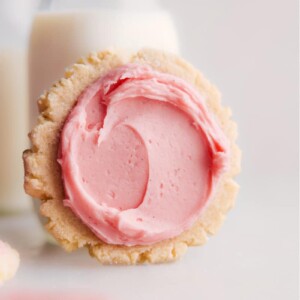
Swig Sugar Cookies
Equipment
- Dark-colored sheet pan
- stand mixer with paddle attachment, or large bowl and hand mixer
- Food scale optional, but highly recommended, see note 1
- Silicone baking mat or parchment paper
- Cooling Rack
Ingredients
- 8 tablespoons unsalted butter at room temperature
- 1-1/4 cup granulated sugar divided
- 1/2 cup powdered sugar
- 1 large egg
- 1-1/2 teaspoons vanilla extract
- 1/4 teaspoon almond extract or coconut extract, optional
- 1/3 cup vegetable oil or canola oil
- 3/4 teaspoon salt
- 1/2 teaspoon cream of tartar
- 1/2 teaspoon baking soda
- 3 cups all-purpose flour
Frosting
- 16 tablespoons unsalted butter at room temperature
- 4-1/2 cups powdered sugar
- 2 teaspoons vanilla extract or 1 teaspoon vanilla bean paste
- 1/8 teaspoon salt
- 4 tablespoons heavy cream plus extra to use as needed
- Red food coloring optional, to make frosting pink
Instructions
- Preheat oven to 350°F. Line a large dark-colored sheet pan with parchment paper or a silicone liner. (If using a light-colored sheet pan, add 2–4 minutes to the baking time).
- Using a stand mixer fitted with a paddle attachment (or a large bowl and hand mixer), cream butter, 2/3 cup granulated sugar, and powdered sugar until smooth and creamy. Add egg, vanilla, almond extract (if using), and vegetable oil. Beat at medium speed, scraping sides as needed, until creamy and silky-smooth looking.
- Add baking soda, cream of tartar, salt, and flour on top. Beat on low until integrated, then increase speed and beat until a smooth dough is formed. Don’t overmix.
- Roll even-sized dough balls (2 tightly packed tablespoons or 40 grams each). Add remaining 1/2 cup granulated sugar to a small bowl. Roll balls in the sugar and generously space apart on lined sheet pan (I only bake 6 at a time). Dip the bottom of a glass into the sugar, then press into the cookie until the edges crack a bit. (If dough is warm or feels overly soft/gooey, pop the tray of cookie dough in freezer for 15 minutes before baking—insurance from spreading in case the kitchen is overly warm or butter is too soft!)
- Bake 8–10 minutes. The cookies won’t brown and should look almost undercooked, but if you use a metal spatula to gently lift a cookie, the bottom should be slightly golden and not look wet at all. Right out of the oven, you may need to gently press the cup into the tops of the cookies again if they puffed up too much. (Don’t press down too hard, though.) Let cookies stand on the sheet pan 5 minutes before carefully transferring to a cooling rack. Let cool completely before frosting—cookies are fragile! Repeat with remaining dough until all cookies are baked.
- Prepare frosting while cookies are cooling: Using a stand mixer with a paddle attachment, beat butter on medium speed until creamy, about 2 minutes. Add 4½ cups powdered sugar, vanilla, and salt. Mix on low speed. Gradually pour in 1 tablespoon cream at a time (start with 4 tablespoons), and mix on medium-high speed until ingredients are integrated. Scrape sides and bottom as needed. Once integrated, add food coloring (if using), and beat on medium-high speed 2 minutes until smooth and creamy. Taste and adjust as desired. (Add more cream if needed for consistency. If frosting is too soft, add more powdered sugar.) If frosting is soft, chill 10–15 minutes before frosting.
- Gently frost completely cooled cookies using a table knife or off-set spatula. The frosting layer should be nice and thick! You’ll likely have about 1 cup of extra frosting. You can use leftover frosting on pancakes/waffles, a small batch of cupcakes, etc.) Enjoy!
Video
Recipe Notes
Nutrition
Nutrition information is automatically calculated, so should only be used as an approximation.
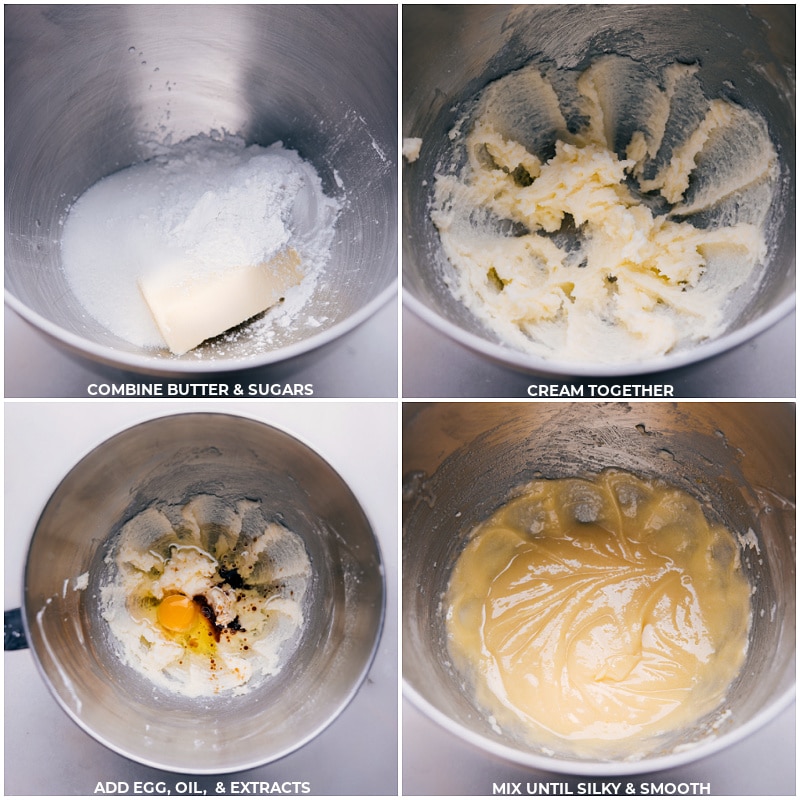
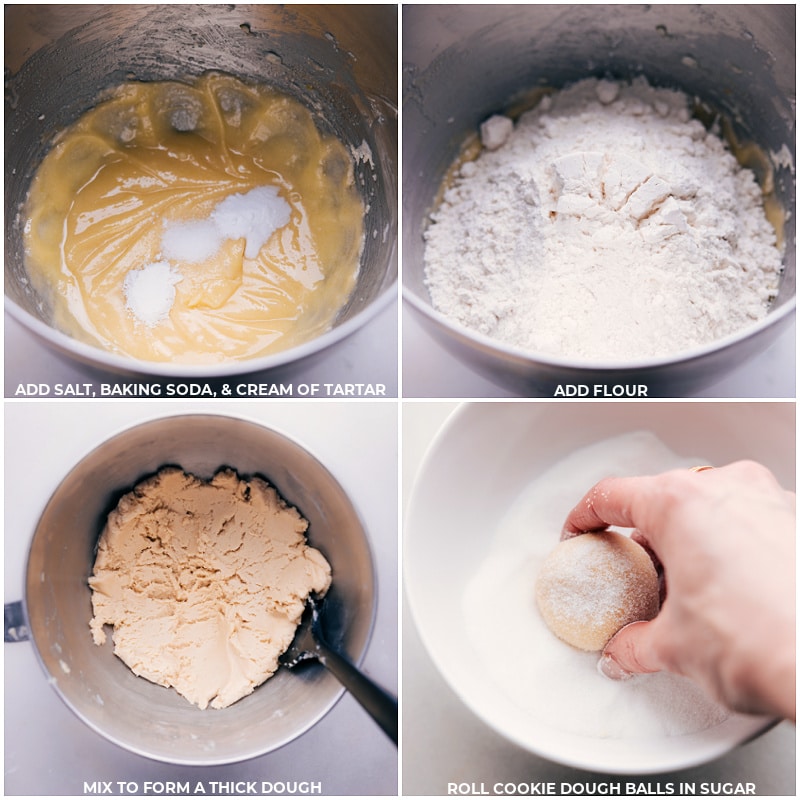
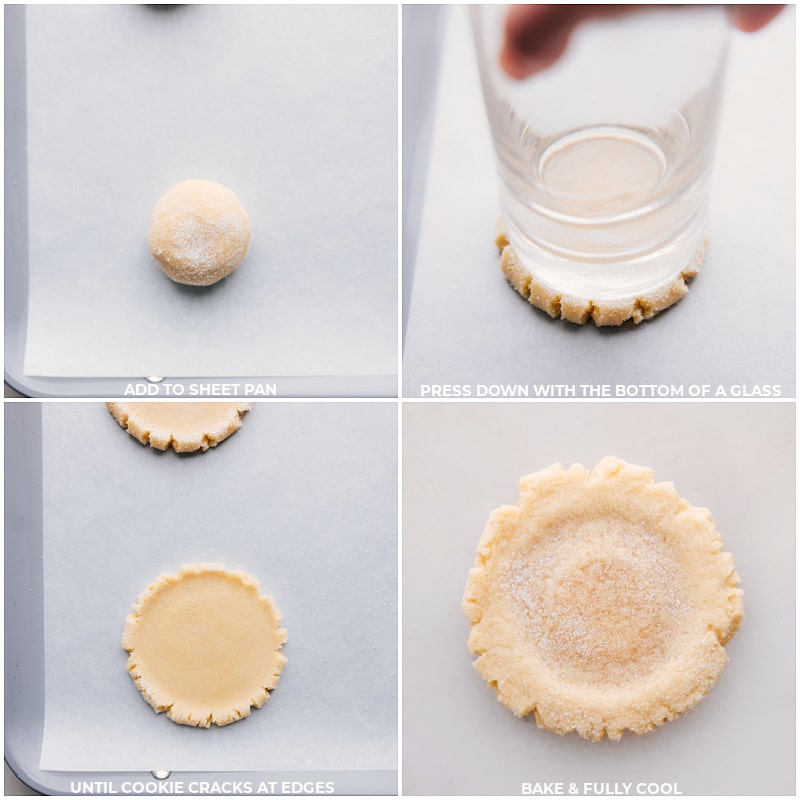
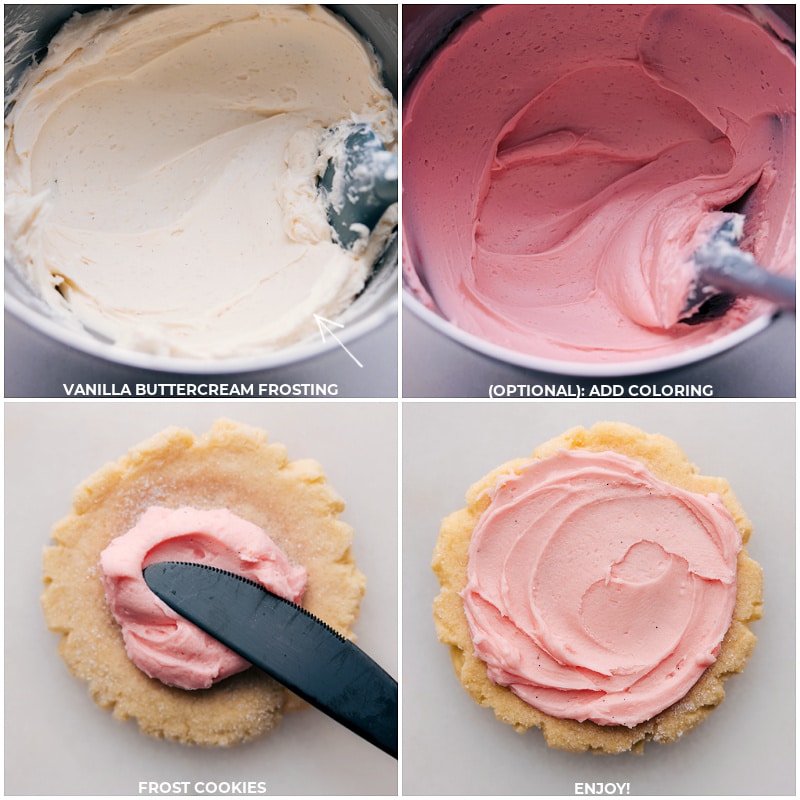
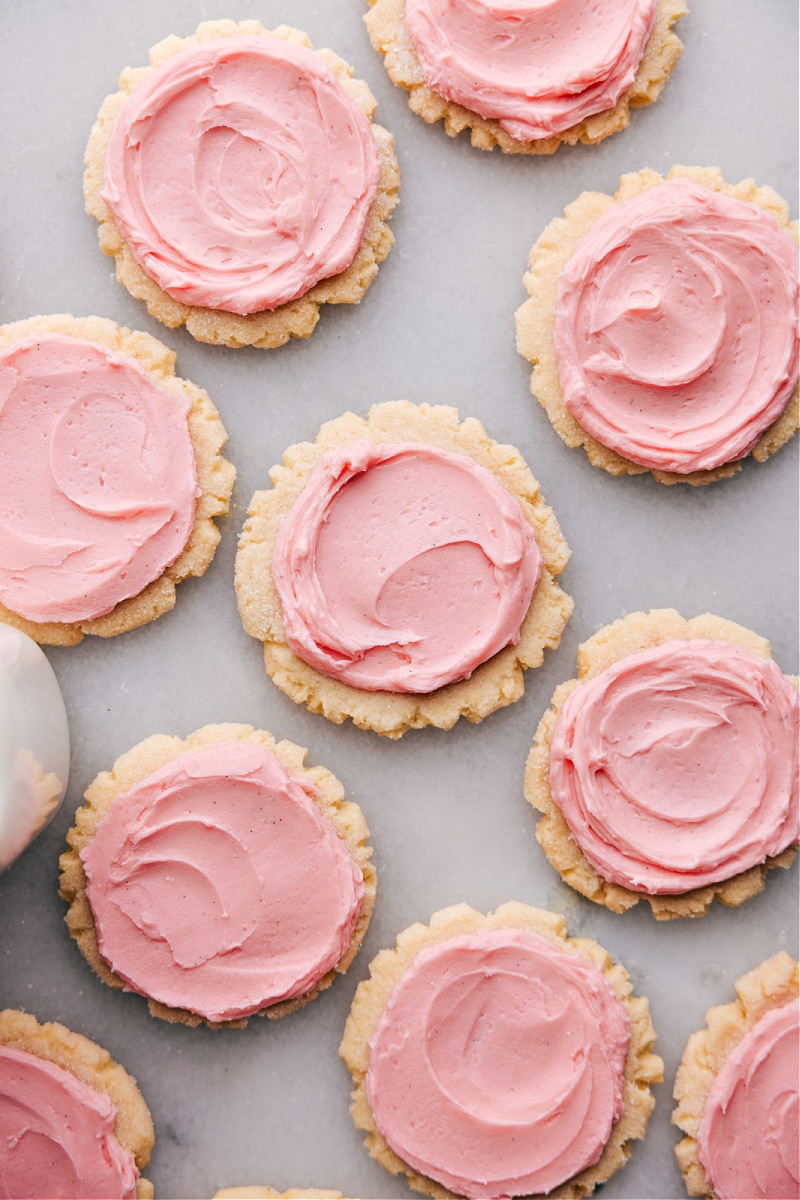



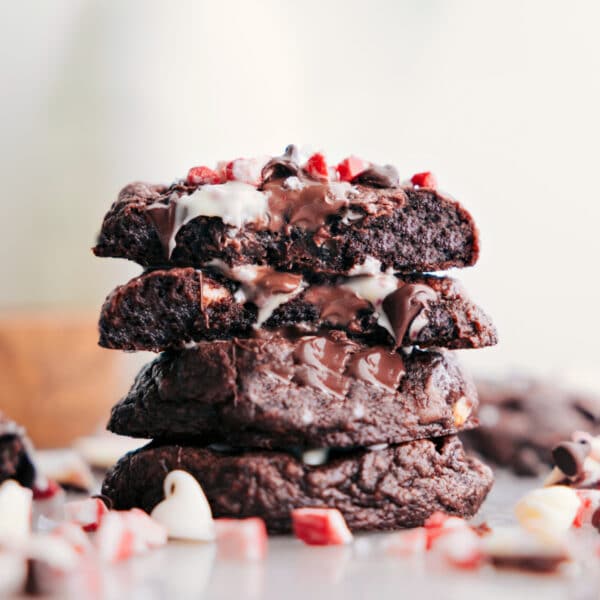
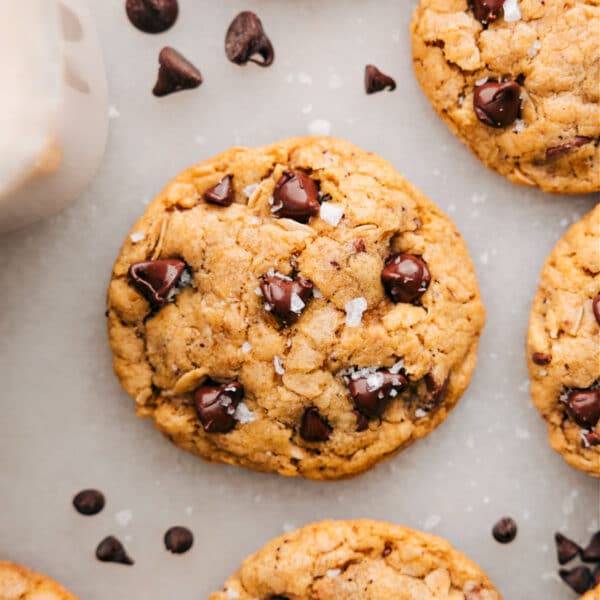
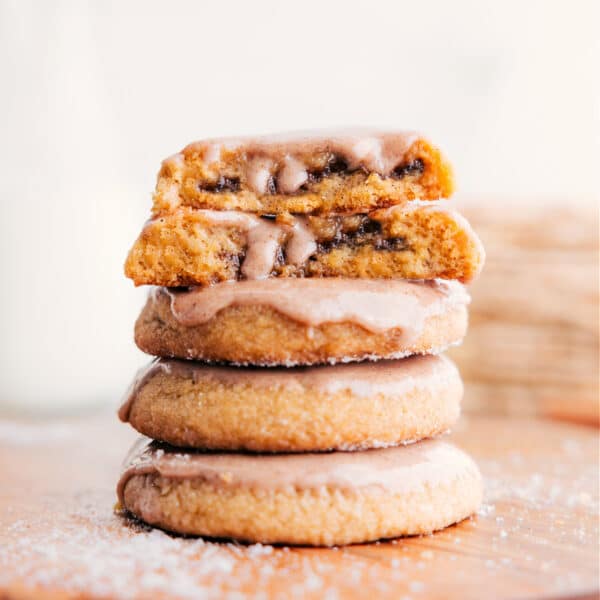
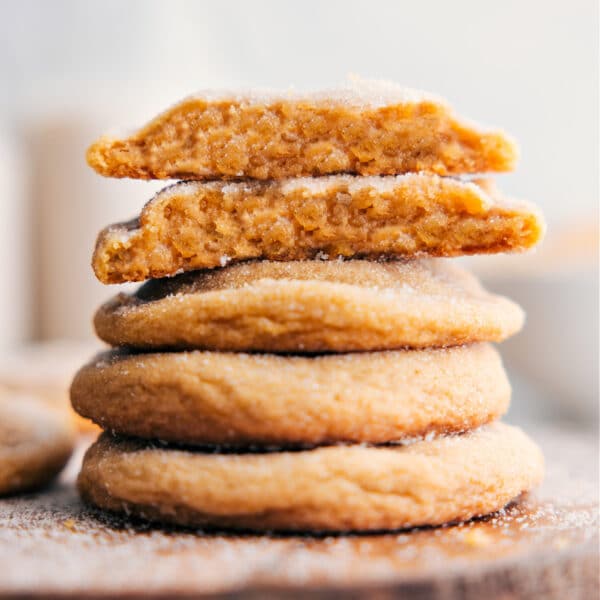









Cant wait to make this soon for me for the cookies and frosting can i use vegan butter and coconut cream i never had swig sugar cookies before perfect for my after office snacks love your recipes as always brightens up my day everyday after work
I’m so excited for you to try! Thanks so much Ramya! 🙂